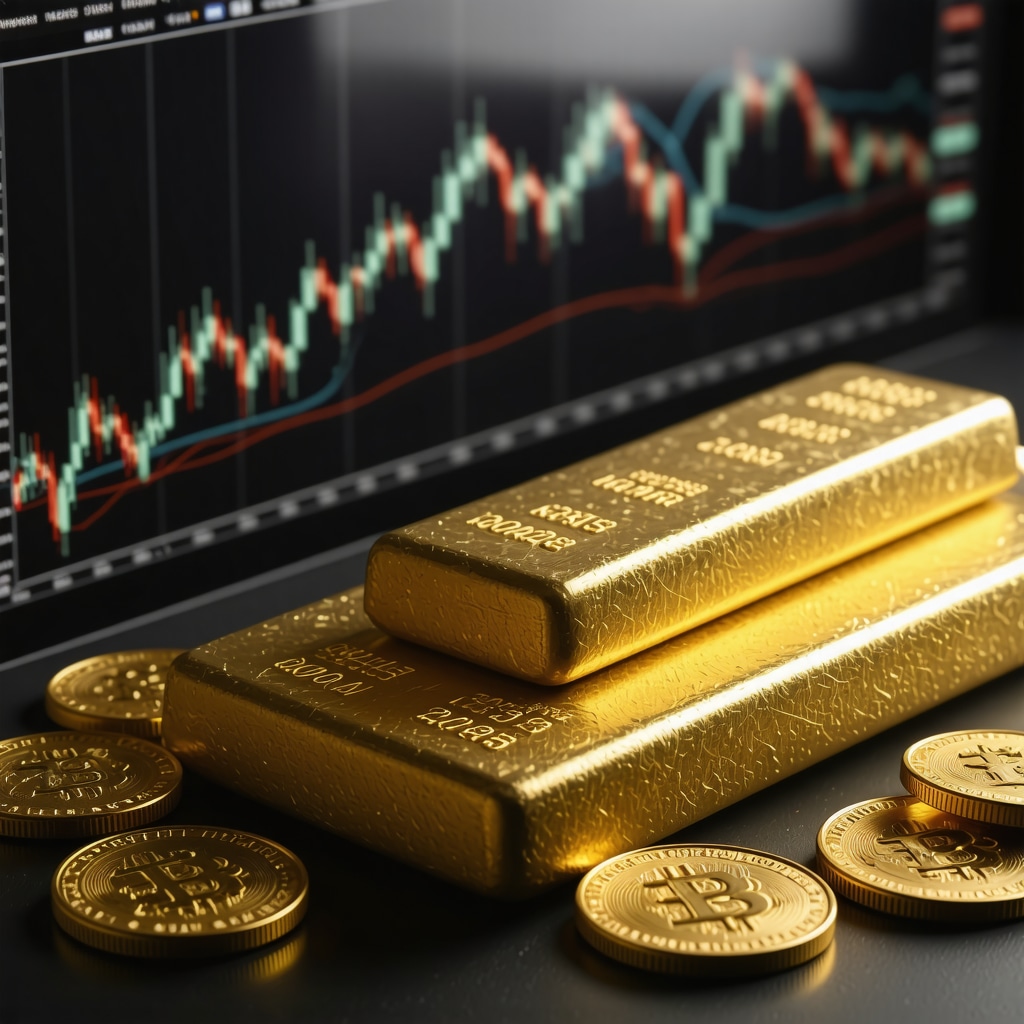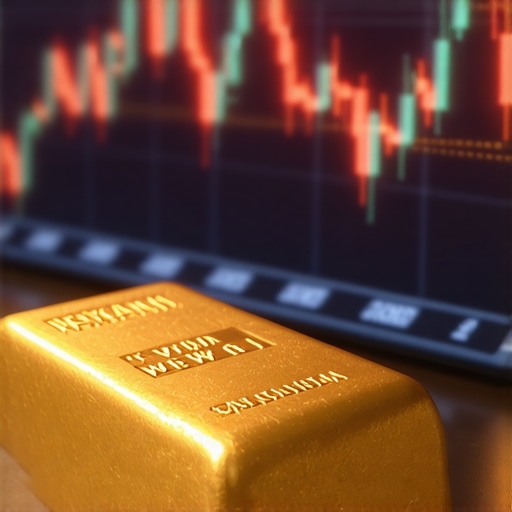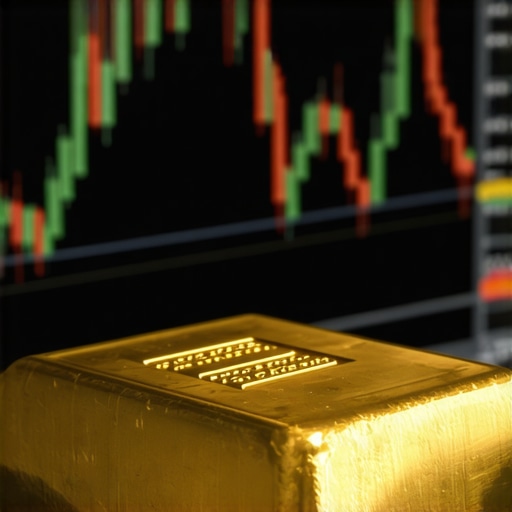Anticipating Gold Price Trajectories: Strategic Context for 2025
In the complex landscape of global finance, forecasting the gold price for 2025 requires a multifaceted understanding of economic indicators, geopolitical dynamics, and market psychology. Gold, as a historically proven store of value and hedge against inflation, reacts not only to monetary policy shifts but also to structural shifts in supply and demand. This article delves into the nuanced factors shaping gold price movements, enabling investors to navigate the forthcoming volatility with informed precision.
Macroeconomic Influences: Inflation, Interest Rates, and Currency Fluctuations
Inflationary pressures remain a primary catalyst for gold price appreciation. As central banks worldwide, including the Federal Reserve and the European Central Bank, adjust interest rates to tame inflation, gold’s appeal as a non-yielding asset fluctuates inversely with real yields. Concurrently, the US dollar’s strength, influenced by fiscal policies and trade balances, exerts a pivotal influence on gold prices due to the metal’s dollar-denominated valuation. Understanding these intertwined macroeconomic variables is essential for anticipating gold’s trajectory.
How Do Central Bank Gold Purchases Impact Price Volatility and Market Dynamics?
Central banks have increasingly become key players in gold markets through strategic acquisitions, driven by diversification goals and geopolitical considerations. Their purchases can tighten physical supply, thereby elevating price volatility. The International Monetary Fund and World Gold Council reports indicate a rising trend in official sector demand, which not only supports price floors but also signals shifting trust in fiat currencies. For investors, monitoring central bank gold purchase patterns is critical to deciphering underlying market momentum.
Supply Chain Constraints and Mining Sector Dynamics
The gold supply side is increasingly constrained by operational challenges within the mining sector, including rising extraction costs, regulatory hurdles, and geopolitical instability in key producing regions. These factors contribute to a potential supply deficit that can exert upward pressure on prices. Additionally, the rise of sustainable mining practices introduces longer-term shifts in production capacity. Investors should examine detailed gold supply and demand analyses to align their strategies with evolving market fundamentals.
Investor Behavior and Market Sentiment: ETF Flows and Speculative Trends
Exchange-traded funds (ETFs) and speculative trading significantly influence short to medium-term gold price movements. The dynamic flows in gold ETFs reflect investor sentiment toward risk and economic stability. During periods of heightened uncertainty, a surge in ETF holdings can amplify price rallies, whereas profit-taking or deleveraging may trigger sharp corrections. Integrating knowledge of gold ETF market behavior is indispensable for tactical positioning.
Advanced Hedging Strategies: Leveraging Gold Amid Economic Volatility
Given the anticipated economic fluctuations in 2025, sophisticated hedging strategies involving physical gold, ETFs, and mining equities are paramount. Diversifying across these instruments can mitigate risks associated with inflation, currency devaluation, and geopolitical shocks. For instance, coupling physical gold ownership with selective exposure to mining stocks—carefully vetted for operational resilience—can optimize portfolio robustness. Detailed guidance on effective gold investment strategies can enhance investor confidence and returns.
What Are the Most Reliable Indicators for Predicting Gold Price Movements in 2025?
Predicting gold prices accurately demands synthesizing diverse indicators: real interest rates, central bank policies, geopolitical risk indices, and mining output reports among them. Advanced models also incorporate sentiment analysis derived from ETF flow data and futures market positioning. Engaging with authoritative resources such as the World Gold Council research provides empirical backing and nuanced interpretations essential for expert-level forecasting.
Explore Further and Contribute Your Expertise
For investors and analysts aiming to deepen their understanding of gold market dynamics, exploring specialized content on key factors influencing gold price trends in 2025 is highly recommended. Your professional insights and experiences with gold investments can also enrich community knowledge—consider sharing your analysis on expert forums and contributing to ongoing discourse.
Decoding the Impact of Geopolitical Shifts on Gold Price Stability
Geopolitical events, ranging from trade tensions to regional conflicts, inherently affect investor confidence and, consequently, gold prices. Historically, gold acts as a safe haven during periods of uncertainty, with demand surging when geopolitical risks intensify. However, the 2025 outlook requires a nuanced understanding of how modern geopolitical dynamics—such as sanctions, shifting alliances, and resource nationalism—reshape supply chains and influence central bank behavior. Analyzing these factors alongside economic indicators provides a comprehensive framework for anticipating market volatility.
Could Emerging Technologies Transform Gold Trading and Price Discovery?
The integration of blockchain, artificial intelligence, and advanced analytics in gold trading platforms could significantly enhance transparency, liquidity, and price discovery mechanisms. These technologies promise to reduce inefficiencies and counteract market manipulation risks, which have historically contributed to erratic price movements. Investors and institutions adopting these innovations may gain competitive advantages, enabling more precise timing and execution of trades. Exploring expert analyses on these technological trends could redefine traditional strategies and risk management approaches.
Strategic Diversification: Balancing Physical Gold with Digital and Equity Instruments
While physical gold remains a cornerstone for many investors seeking tangible asset security, the proliferation of gold ETFs and mining equities offers diversified exposure with varying risk-return profiles. Combining these assets strategically can optimize portfolio resilience amid fluctuating market conditions. For example, mining stocks may offer leveraged upside linked to operational efficiencies and exploration successes, whereas ETFs provide liquidity and ease of transaction. Understanding the interplay between these investment vehicles, including their correlation dynamics and cost structures, is essential for crafting nuanced portfolios.
For a deeper dive into mining stocks and their growth potential, explore our detailed guide on top gold mining stocks to watch for smart 2025 gains.
The Role of Demand from Emerging Markets and Technology Sectors
Demand drivers from emerging economies, particularly in Asia, and growing technological applications such as electronics and medical devices, contribute significantly to gold’s price dynamics. Rising middle-class populations and cultural affinity for gold in regions like India and China fuel jewelry and investment demand, while industrial consumption adds a steady baseline. Monitoring these trends helps predict sustained demand pressures that may offset or amplify macroeconomic influences.
According to the World Gold Council’s latest research, technology sector demand is expected to grow steadily, underscoring its importance in long-term supply-demand balance.
Advanced Risk Assessment: Integrating Volatility Models and Sentiment Analysis
Beyond conventional indicators, sophisticated investors leverage volatility modeling and sentiment analysis to anticipate price swings. Volatility indices and futures market data offer quantitative measures of risk, while sentiment derived from social media and financial news can provide early signals of shifts in market psychology. Combining these tools with fundamental analysis can enhance decision-making agility and risk mitigation.
Join the Conversation: What Strategies Have You Found Effective in Managing Gold Market Volatility?
We invite experienced investors and analysts to share your insights and approaches for navigating gold market fluctuations in 2025. Your contributions can foster a richer understanding and support the community in developing robust investment frameworks. Feel free to comment below or share this article with peers interested in advanced gold investment strategies.
Innovative Technologies Revolutionizing Gold Trading and Market Transparency
The gold market, traditionally characterized by opaque practices and delayed information dissemination, is undergoing a transformative phase fueled by cutting-edge technologies such as blockchain and artificial intelligence (AI). These innovations promise to enhance transparency, reduce settlement times, and improve price discovery mechanisms, thereby offering investors a more efficient and trustworthy trading environment.
Blockchain technology, with its decentralized ledger system, enables immutable recording of gold transactions, from mining provenance to final sale, significantly mitigating fraud and counterfeit risks. This traceability not only reassures investors about the authenticity of physical gold but also streamlines regulatory compliance processes. Meanwhile, AI-driven analytics empower market participants to analyze vast datasets in real-time, uncovering nuanced patterns and forecasting price movements with greater precision.
How Can Blockchain and AI Integration Specifically Improve Gold Price Discovery and Reduce Market Manipulation Risks?
Integrating blockchain with AI can create a synergistic effect wherein transparent transaction records feed into sophisticated algorithms for anomaly detection and predictive modeling. For instance, AI can analyze blockchain-verified trading volumes and flow patterns to identify suspicious trading behaviors or potential manipulation attempts early, enabling proactive regulatory interventions. Moreover, these technologies facilitate fractional ownership and tokenization of gold assets, enhancing liquidity and accessibility for a wider range of investors.
According to research published by the Nasdaq Technology Insights, early adopters of blockchain-based gold trading platforms report improved market efficiency and investor confidence, underscoring the transformative potential of these technologies.
These technological advancements are not without challenges. Issues such as interoperability between legacy systems, regulatory acceptance, and cybersecurity vulnerabilities require ongoing attention. Nonetheless, the trajectory points toward a more democratized and resilient gold market landscape.
Harnessing Quantitative Finance Models for Gold Price Forecasting Accuracy
Advanced quantitative models, incorporating stochastic calculus, machine learning, and econometric frameworks, are becoming indispensable tools for expert investors aiming to anticipate gold price trajectories. These models integrate multifactor inputs including macroeconomic indicators, geopolitical risk metrics, and sentiment indices derived from social media and news analytics.
For example, regime-switching models can capture the nonlinear behavior of gold prices during periods of market stress versus stability, enabling dynamic hedging strategies tailored to evolving conditions. Additionally, machine learning algorithms trained on historical futures and ETF data can detect subtle correlations and leading indicators overlooked by traditional analysis.
Implementing these sophisticated models requires high-quality data and computational resources, often necessitating collaboration between financial analysts, data scientists, and domain experts. The payoff is a more nuanced understanding of risk and opportunity, essential for navigating the complex gold market environment projected for 2025.
What Are the Limitations and Best Practices When Applying Machine Learning Models to Gold Price Prediction?
While machine learning offers powerful predictive capabilities, it is subject to limitations including overfitting, data bias, and the challenge of capturing unprecedented geopolitical events. Experts recommend a hybrid approach combining machine learning outputs with fundamental analysis and expert judgment to mitigate these risks.
Continuous model validation and incorporation of new data streams, such as real-time mining output and central bank gold purchase disclosures, enhance robustness. Engaging with authoritative financial research platforms like the World Gold Council ensures access to validated datasets and cutting-edge analytical methodologies.
Bridging Physical and Digital: The Future of Gold Investment Portfolios
As gold investment vehicles diversify, combining physical holdings with digital assets such as gold-backed tokens and equity positions in mining companies presents both opportunities and complexities. Strategic allocation across these instruments necessitates understanding their unique risk profiles, liquidity characteristics, and regulatory landscapes.
Physical gold offers intrinsic security and inflation hedging but entails storage and insurance costs. Digital gold assets enhance liquidity and facilitate fractional ownership but carry counterparty and technological risks. Mining equities provide leverage to gold price movements but introduce operational and geopolitical exposure.
Integrating these components within a cohesive portfolio framework involves advanced asset allocation theories, risk management practices, and scenario analysis to optimize returns and resilience.
How Can Investors Effectively Balance Exposure Between Physical Gold, Digital Tokens, and Mining Equities to Maximize Risk-Adjusted Returns?
Effective balancing requires a multi-dimensional assessment incorporating correlation analyses, volatility metrics, and potential drawdowns. Dynamic rebalancing strategies that respond to market conditions and investment horizon considerations are recommended. Further, engaging with specialized advisory services and leveraging portfolio optimization tools can enhance decision-making.
For those interested in exploring these advanced portfolio strategies, our comprehensive resource on effective gold investment strategies provides in-depth guidance tailored to the 2025 economic context.
Elevating Gold Market Intelligence with Cutting-Edge Tech Integration
The intersection of artificial intelligence (AI) and blockchain technology is heralding unprecedented sophistication in gold market analytics and trading mechanisms. By leveraging decentralized ledgers alongside advanced machine learning models, market participants can transcend traditional data limitations, enabling real-time verification and predictive analytics that were previously unattainable. This fusion not only enhances transparency but also facilitates the democratization of access to gold investments through tokenization and fractional ownership.
Synergistic Effects of AI-Driven Analytics and Blockchain Transparency
AI algorithms applied to blockchain-verified transactional data can identify subtle market anomalies and emergent trends with heightened precision. This capability allows for preemptive detection of market manipulation attempts and liquidity bottlenecks, thus fostering a more resilient trading environment. Furthermore, the immutable nature of blockchain records underpins regulatory compliance and auditability, critical in an increasingly scrutinized financial landscape.
How Can Advanced AI and Blockchain Systems Overcome Current Gold Market Inefficiencies?
The integration of AI with blockchain offers solutions to longstanding inefficiencies such as delayed settlement times, lack of provenance verification, and opaque pricing mechanisms. AI can process vast datasets encompassing mining outputs, ETF flows, and geopolitical indicators, synthesizing insights that inform dynamic pricing models. Meanwhile, blockchain ensures secure, transparent, and tamper-proof recording of each transaction stage, thereby reducing counterparty risks and fraud. This confluence enables stakeholders to execute trades with enhanced confidence and operational efficiency.
According to the Nasdaq Technology Insights, early adopters of integrated AI-blockchain gold trading platforms report marked improvements in market liquidity and investor trust, highlighting the transformative impact of these technologies.
Advanced Quantitative Techniques: Navigating Complexity with Regime-Switching Models
Beyond technology adoption, quantitative finance methodologies such as regime-switching models and ensemble machine learning approaches are instrumental in capturing the nonlinear and context-dependent behaviors of gold prices. These models accommodate shifts between market regimes—characterized by volatility spikes or tranquility—and integrate multifactor drivers like macroeconomic variables, geopolitical risk indices, and sentiment metrics. By doing so, they empower investors to tailor hedging and allocation strategies dynamically, optimizing for risk-adjusted returns amid uncertainty.
Strategic Portfolio Optimization: Integrating Physical, Digital, and Equity Gold Assets
In an era of diversified gold investment instruments, constructing an optimized portfolio necessitates rigorous analysis of inter-asset correlations, liquidity profiles, and risk exposures. Physical gold offers intrinsic inflation hedging but incurs storage and insurance costs; digital tokens enhance tradability and fractional ownership but introduce technological risk; mining equities provide leveraged exposure with operational and geopolitical considerations. Employing advanced portfolio optimization frameworks and dynamic rebalancing algorithms enables investors to harness complementary strengths while mitigating systemic vulnerabilities.
For practitioners seeking to refine their strategies, comprehensive insights are available in effective gold investment strategies for 2025.
Expanding the Analytical Horizon: Incorporating Sentiment and Volatility Modelling
Cutting-edge risk assessment integrates sentiment analysis derived from social media and financial news with volatility modeling techniques, such as GARCH and stochastic volatility frameworks. These approaches enable early detection of shifts in market psychology and quantification of risk dynamics, facilitating proactive hedging and position adjustments. The fusion of qualitative sentiment data with quantitative volatility metrics marks a new frontier in gold market intelligence.
Join the Expert Dialogue: What Innovative Tools Are Shaping Your Gold Investment Decisions?
We encourage seasoned investors and analysts to share their experiences and insights regarding the integration of AI, blockchain, and quantitative models in gold market strategies. Your contributions can enrich collective expertise and foster the evolution of sophisticated investment frameworks. Engage with us through comments or share this article within your professional networks.

Expert Insights & Advanced Considerations
Central Bank Gold Purchases as a Strategic Market Lever
Central banks continue to exert outsized influence on the gold market by strategically accumulating reserves to diversify away from fiat currency risk. Their buying patterns can constrict supply and amplify volatility, rendering close monitoring of official sector demand indispensable for expert forecasting. For a detailed analysis, explore how central bank gold purchases affect price volatility.
Integrating Quantitative Models with Sentiment Analytics
Forecasting gold price trajectories in 2025 demands a hybrid approach combining econometric models, regime-switching frameworks, and machine learning with real-time sentiment data from ETFs and social media. This multidimensional methodology captures nonlinear market behaviors and emergent risks more effectively than traditional analysis alone.
Balancing Physical and Digital Gold Assets in Portfolio Construction
Effective portfolio strategies recognize the complementary attributes of physical gold, digital tokens, and mining equities. Each asset class offers distinct liquidity, risk, and return profiles. Dynamic allocation and rebalancing, informed by correlation and volatility analyses, optimize risk-adjusted returns in the evolving investment landscape. Further guidance can be found in best gold investment strategies to hedge inflation risks 2025.
Technological Innovation as a Catalyst for Market Transparency and Efficiency
The fusion of blockchain and AI technologies is revolutionizing gold trading by enhancing provenance verification, reducing settlement times, and improving price discovery. These advances mitigate manipulation risks and democratize access through fractional ownership, signaling a paradigm shift in how gold markets operate globally.
Curated Expert Resources
- World Gold Council Research: Offers comprehensive data, market analysis, and authoritative insights essential for understanding gold’s macroeconomic and geopolitical drivers. (gold.org/research)
- BuyingGoldNow.com Guides: Extensive coverage on central bank purchase impacts, supply-demand analytics, and advanced investment strategies, including central bank gold purchase effects and hedging strategies for 2025.
- Nasdaq Technology Insights: Investigates blockchain and AI integration in commodity markets, highlighting technological advances and their impact on liquidity and transparency. (nasdaq.com/articles/blockchain-and-ai-transforming-gold-markets)
- Quantitative Finance Literature: Scholarly articles and practical guides on regime-switching models and machine learning applications for commodity price forecasting, supporting sophisticated analytical frameworks.
- Specialized Forums and Expert Communities: Platforms for exchanging high-level strategies and real-world insights, facilitating collaborative knowledge growth among professional investors and analysts.
Final Expert Perspective
In synthesizing the multifaceted influences on gold price movements for 2025, it becomes clear that mastering this domain requires more than surface-level analysis. The interplay of central bank policies, supply chain dynamics, investor behavior, and cutting-edge technology forms a complex mosaic demanding sophisticated, data-driven approaches. Embracing advanced quantitative models coupled with sentiment analytics, while strategically blending physical and digital gold assets, positions investors to navigate volatility with confidence and precision.
For those committed to maintaining an expert edge, continuous engagement with authoritative resources and active participation in professional discourse is paramount. We invite you to deepen your expertise by exploring our comprehensive guides such as top gold mining stocks to watch for smart 2025 gains and sharing your insights with the community. This collaborative approach is essential to mastering the evolving nuances of the gold market and capitalizing on its opportunities.










